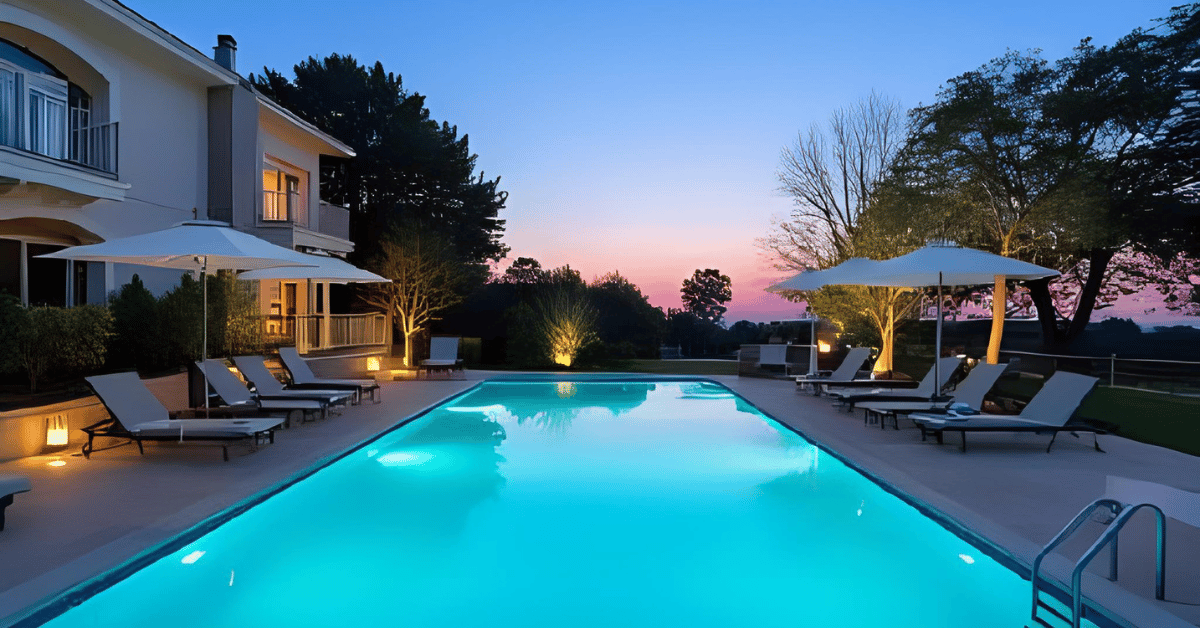Owning a pool on Long Island comes with its fair share of rewards and responsibilities. The salty air, seasonal weather changes, and everyday use can all take a toll on your pool’s surface. Eventually, you’ll notice signs—stains that won’t lift, cracks that seem to multiply, or a surface that just doesn’t feel quite right underfoot. These are more than aesthetic problems. They’re signals. And when they start to appear, it’s time to start thinking seriously about pool resurfacing.
At Gold Coast Swimming Pools, we specialize in restoring swimming pools to their best form through proper maintenance, repair, and yes—resurfacing. Pool resurfacing isn’t something you want to guess your way through. With over three decades of experience, we’ve helped countless Long Island residents breathe new life into their aging pools.
If you’re considering resurfacing or aren’t even sure what that involves yet, keep reading. This guide lays it all out.
The Need for Pool Resurfacing on Long Island
Pool owners in Nassau and Suffolk counties face distinct regional challenges that speed up wear and tear. The frequent freeze-thaw cycles during winter months, combined with summer usage, create ideal conditions for damage. If you’re not resurfacing your pool at the right time, minor issues can snowball into costly structural repairs.
Surface degradation is more than skin-deep. When ignored, it can compromise filtration, reduce water quality, and cause user discomfort. That means rough patches, chipped tiles, faded coatings, and even small leaks.
Many pool owners tend to ask: “How often should I resurface my pool?”
The answer depends on multiple factors:
- The type of pool surface (plaster, pebble, quartz, etc.)
- How well it’s been maintained over the years
- Local weather exposure and frequency of use
- Water chemistry and chemical balance
Recognizing the Right Time to Resurface
Understanding when it’s time for pool resurfacing is critical. Waiting too long can reduce the lifespan of your pool shell and mechanical systems. These are the most common indicators:
- Surface discoloration that persists even after acid washing
- Cracking or etching on the pool floor or walls
- Chalking and flaking from worn-out plaster
- Visible substrate beneath thin or patchy surface layers
- Rough texture causing minor cuts or discomfort
- Constant leaking that isn’t solved with patching
Even if your pool looks “mostly fine,” a professional evaluation from Gold Coast Swimming Pools can determine whether resurfacing will preserve your investment—or if you’re risking greater issues by waiting.
What Pool Resurfacing Actually Involves
Before diving in, it helps to understand what the process really includes. Pool resurfacing isn’t a simple weekend project. It’s a multi-stage operation that requires planning, precision, and the right materials.
Here’s a typical breakdown:
- Drain and prep – The pool is emptied and cleaned. Any old coating is chipped or sandblasted off.
- Repair phase – Cracks are filled, leaks sealed, and damaged areas prepped for bonding.
- Application of new surface – Depending on your choice, this could be white plaster, quartz, pebble finishes, or tile. Each has a unique texture and lifespan.
- Curing and filling – The surface is cured, then the pool is refilled, rebalanced, and made ready for use.
Gold Coast Swimming Pools follows a tested resurfacing method to ensure the longevity and safety of your pool. Our team works efficiently, minimizing downtime and delivering consistent results.
Choosing the Right Finish for Your Long Island Pool
Selecting the right resurfacing material isn’t just about visual appeal—it’s about matching your pool’s use, budget, and desired longevity.
Here’s a breakdown of the most common resurfacing finishes available:
- Plaster (Marcite): The most cost-effective option. Smooth, clean, and classic. Lasts 5–8 years with proper care.
- Quartz: More durable than plaster. Offers a wider range of colors and textures. Lifespan ranges from 10–15 years.
- Pebble: High-end, textured finish that provides both durability and natural aesthetics. Can last 15–20 years.
- Tile: The most durable (and expensive). Fully customizable. Lifespan exceeds 20 years with regular upkeep.
Long Island pool owners often prefer quartz and pebble for their resistance to climate effects and algae buildup.
Factors That Influence Pool Resurfacing Costs
One of the first questions our clients ask is: “How much does it cost to resurface a pool?” There’s no one-size-fits-all answer. Costs vary widely depending on:
- Size and shape of the pool
- Type of resurfacing material chosen
- Existing surface condition
- Accessibility for equipment
- Additional repairs or upgrades (like coping, tile, or decking)
While a small residential pool might cost between $5,000–$10,000 to resurface, larger or more customized pools can exceed that. At Gold Coast Swimming Pools, we provide detailed estimates upfront, and we walk through all your options before work begins. No hidden charges, no surprise invoices.
Pool Resurfacing Long Island: Planning Around the Weather
On Long Island, timing matters. You don’t want to schedule resurfacing work in the middle of a rainy stretch or during frigid months. Spring and early fall tend to be ideal.
Why?
- Temperatures remain stable for curing
- Lower humidity levels reduce drying time
- Off-season labor availability is higher
- You’ll be swim-ready when summer returns
Our scheduling team at Gold Coast Swimming Pools recommends booking at least 4–6 weeks in advance during peak seasons to ensure your preferred start date.
Pool Resurfacing and Long-Term Maintenance
Resurfacing your pool isn’t the end of your maintenance journey—it’s the beginning of a new phase. Once the new surface is in place, a proper maintenance routine becomes even more critical. Here’s what you’ll need:
- Monitor water chemistry weekly (especially pH and calcium levels)
- Use a pool brush appropriate for your surface type
- Run your filtration system consistently
- Schedule professional inspections annually
Neglecting water chemistry is one of the top reasons resurfaced pools degrade prematurely. Investing in pool resurfacing is one thing—protecting it is another.
Gold Coast Swimming Pools offers customized maintenance plans tailored to resurfaced pools. That way, your investment stays protected year after year.
FAQs About Pool Resurfacing Long Island
How long does pool resurfacing take?
Typically 5–10 days, depending on size, weather, and material type.
Can I resurface my pool myself?
While DIY kits exist, they rarely last and can void warranties. We highly recommend hiring professionals.
Does resurfacing increase property value?
Yes. A newly resurfaced pool enhances curb appeal and shows buyers the property is well-maintained.
Will my pool be out of commission during resurfacing?
Yes. The pool must be drained, repaired, cured, and refilled. Plan for about 1–2 weeks of downtime.
Can I upgrade tile or lighting during resurfacing?
Absolutely. Many clients use this opportunity to make style or functional upgrades at the same time.
Let Gold Coast Swimming Pools Handle Your Pool Resurfacing Long Island Project
When you search for pool resurfacing Long Island, you’ll see plenty of names—but experience matters. Our team at Gold Coast Swimming Pools brings decades of proven results and region-specific expertise to every project. Whether you’re restoring a backyard pool in Oyster Bay or upgrading a commercial property in Montauk, we’re equipped to get the job done right.
Contact us today for a personalized consultation. You can reach us online or call (516) 759-3000 to speak with a project advisor. We’ll evaluate your pool and offer honest, informed recommendations—no pressure, just professionalism.
Don’t let another season pass with a pool that looks tired or feels unsafe. It’s time to restore your surface—and your confidence in it. With Gold Coast Swimming Pools, pool resurfacing Long Island becomes an opportunity, not an expense.


